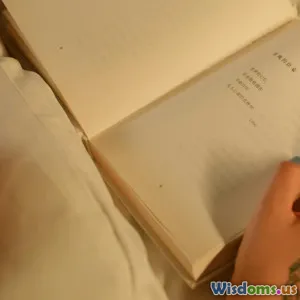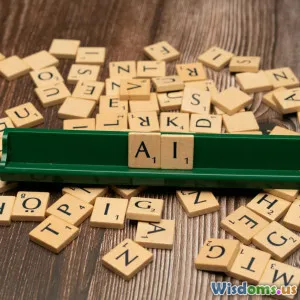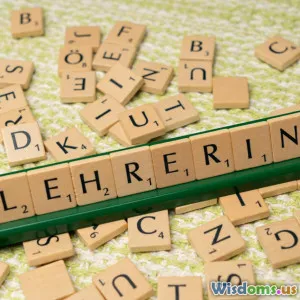
Silent Editing The Role of Social Media in Language Evolution
9 min read Explore how social media subtly shapes language evolution through 'silent editing,' influencing communication worldwide. (0 Reviews)
Silent Editing: The Role of Social Media in Language Evolution
Language is a living, breathing entity, always in flux, evolving to adapt to cultural shifts and technological advances. Today, a powerful but often overlooked force accelerates this linguistic transformation: social media. Like a silent editor operating behind the scenes, social media reshapes the way we communicate privately and publicly, nudging language evolution in unprecedented directions.
Introduction: The Quiet Revolution of Language on Social Media
We are witnesses to an ongoing revolution — not one fought with weapons, but crafted through tweets, posts, memes, and messages. Every day, billions engage on platforms like Twitter, TikTok, Instagram, and WhatsApp, intimately influencing language without conscious intent. This process, which can be viewed as "silent editing," involves subtle shifts in grammar, vocabulary, syntax, and style molded by social media’s unique communication environment.
If you’ve ever wondered where new slang originates or why abbreviations like "LOL" or "FOMO" integrate into everyday speech, social media plays a starring role. This article explores how social media serves as both a catalyst and curator in this ongoing linguistic evolution, shedding light on mechanisms, impacts, and implications.
How Social Media Functions as a 'Silent Editor'
The phrase "silent editing" encapsulates social media's behind-the-scenes influence. Unlike formal editorial processes, this shaping results from millions of users unconsciously adapting and adopting language to fit digital cultures. Let's consider the distinct ways social media acts as a linguistic editor:
1. Democratizing Linguistic Innovation
Historically, language change often originated in specific regions, scholarly works, or literary circles. Today, social media decentralizes this process. Every user can invent, popularize, or distort language rapidly — new words and neologisms propagate via viral posts or memes.
For example, words like "ghosting" (suddenly cutting off communication) and "stan" (to be an obsessed fan) emerged from social media and are now dictionary entries. This rapid spread would have taken years or decades in traditional language evolution.
2. Conciseness as Currency
Social media platforms impose constraints like character limits (e.g., Twitter’s 280 characters) and scrolling attention spans. These rules push users to convey messages succinctly, fueling abbreviations (LOL, BRB), acronyms, emojis, and creative orthography.
Such economy prioritizes immediacy and clarity, subtly altering grammar and sentence structures. Over time, this trend fosters permanent shifts in how brevity and expression balance in digital communication.
3. Influencing Syntax and Grammar
While often maligned for "diluting language standards," social media fosters syntactic experimentation. Users employ non-standard grammar for effect, emphasis, or identity signaling. For instance, the use of lowercase letters for casual tone or omission of punctuation to mimic spoken language nuances.
The popularity of phrases like "I’m dead" (meaning something is hilariously funny) shows semantic shift influenced by internet slang. Linguists observe that some informal online forms are migrating into everyday spoken language.
4. Memes and Multimodal Linguistic Evolution
Language on social media is not just text but a multimedia blend where images, gifs, videos, and texts merge. Memes are a crucial site of silent editorial practice — packing cultural references into a hybridized language form that communicates complex meanings quickly.
As memes mix linguistic creativity with visual cues, they foster new rhetorical conventions, encouraging symbolic and playful language use. This impact reshapes interpretative frameworks within language communities.
Case Studies: Social Media’s Impact on Language Evolution
To understand silent editing’s tangible footprint, examine real-world examples where social media has indelibly shaped language.
Case Study 1: The Rise of Internet Slang in Mainstream Usage
A 2020 study by Oxford English Corpus showed a surge in internet slang within everyday conversation documents.
- Terms like "FOMO" (Fear of Missing Out) and "Simp" originated in online subcultures before entering widespread vernacular.
- Social media influencers and celebrities accelerate slang dissemination.
This trend demonstrates social media's role as a massive filter and broadcaster, silently editing vocabulary to incorporate digital-native expressions.
Case Study 2: Globalization of English Varieties
Platforms like TikTok and YouTube blend dialects and language variety globally. Users from different countries borrow phrases or pronunciation effortlessly.
For instance, Afrobeat-origin slang expressions like "Wahala" (trouble) from Nigerian Pidgin have permeated youth language worldwide, showcasing cross-cultural linguistic editing.
Case Study 3: Language Hybrids and Code-Switching
Multilingual users frequently switch languages within single posts or comments, a phenomenon accelerated by social media.
This practice not only reflects identity but silently shapes hybridized languages. The rise of "Spanglish" in the U.S. digital space and "Hinglish" (Hindi-English) in India illustrate ongoing linguistic blending.
This in-the-moment language remixing highlights how social media creates dynamic forums for natural language evolution in real time.
Linguistic Challenges and Opportunities Created by Social Media
While social media offers unparalleled speed and breadth for language evolution, it also surfaces challenges:
- Misinformation and Semantic Drift: Fast-spreading misinformation can warp language meaning, leading to confusion or misuse of terms.
- Language Preservation Threats: Minoritized languages risk erosion as dominant digital cultures marginalize linguistic diversity.
Conversely, social media empowers revitalization efforts. Platforms enable communities to share and sustain endangered languages by creating digital spaces tailored for linguistic heritage.
Moreover, computational linguistics benefits from vast social media corpora to train AI language models sensitive to evolving language contexts, yielding innovative tools for learning and translation.
Conclusion: Embracing the Silent Editor
Social media acts as a silent editor — a transformative force reshaping language dynamically, democratically, and multidirectionally. Its subtle influence updates vocabularies, augments syntax, introduces new semantics, and blends cultural identities into linguistic forms at record speed.
Rather than textual decay, this phenomenon shows language’s resilience and adaptability. Learners and linguists alike can no longer ignore social media's imprint, as it truly reflects how we think, communicate, and relate in the contemporary world.
Understanding silent editing's role illuminates modern language's mutable nature and inspires us to engage thoughtfully with digital communication. Whether you’re a polyglot, language educator, or curious digital citizen, embracing this evolving language landscape offers both challenge and unprecedented opportunity.
“Language is the road map of a culture. It tells you where its people come from and where they are going.” — Rita Mae Brown
In the digital age, social media is not just the road but also the cartographer silently redrawing the linguistic terrain. Recognizing and studying this role helps us appreciate the ongoing story of human connection, coded not only in words but the spaces in between — the silent edits.
References
- Crystal, David. Language and the Internet. Cambridge University Press, 2006.
- Oxford English Corpus Research, 2020.
- Bamman, D., Eisenstein, J., & Schnoebelen, T. "Gender Identity and Linguistic Variation in Social Media." Journal of Sociolinguistics, 2014.
- Androutsopoulos, Jannis, ed. Mediatized Languages: Language Digitization and Internet Culture. De Gruyter Mouton, 2014.
Rate the Post
User Reviews
Popular Posts





















